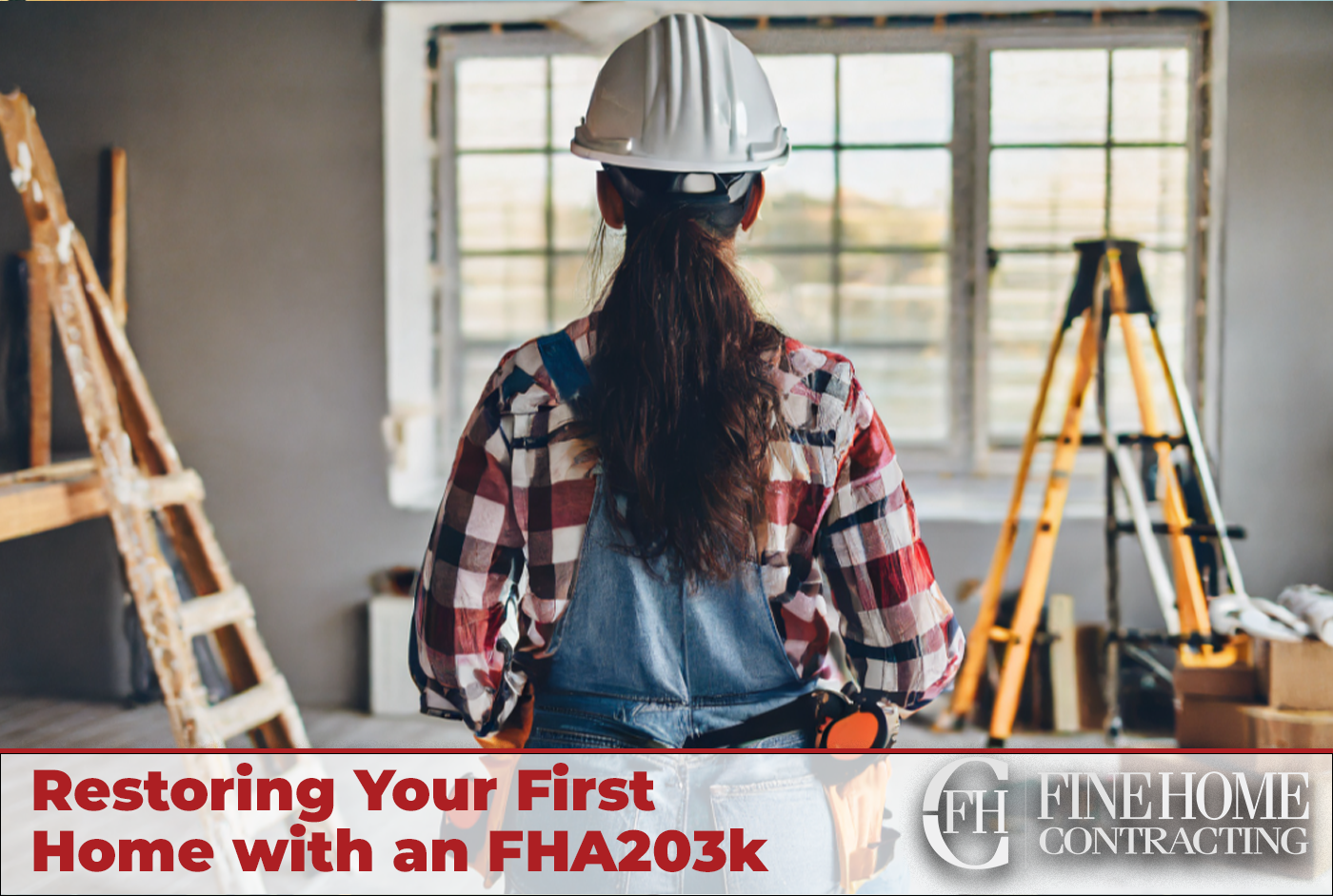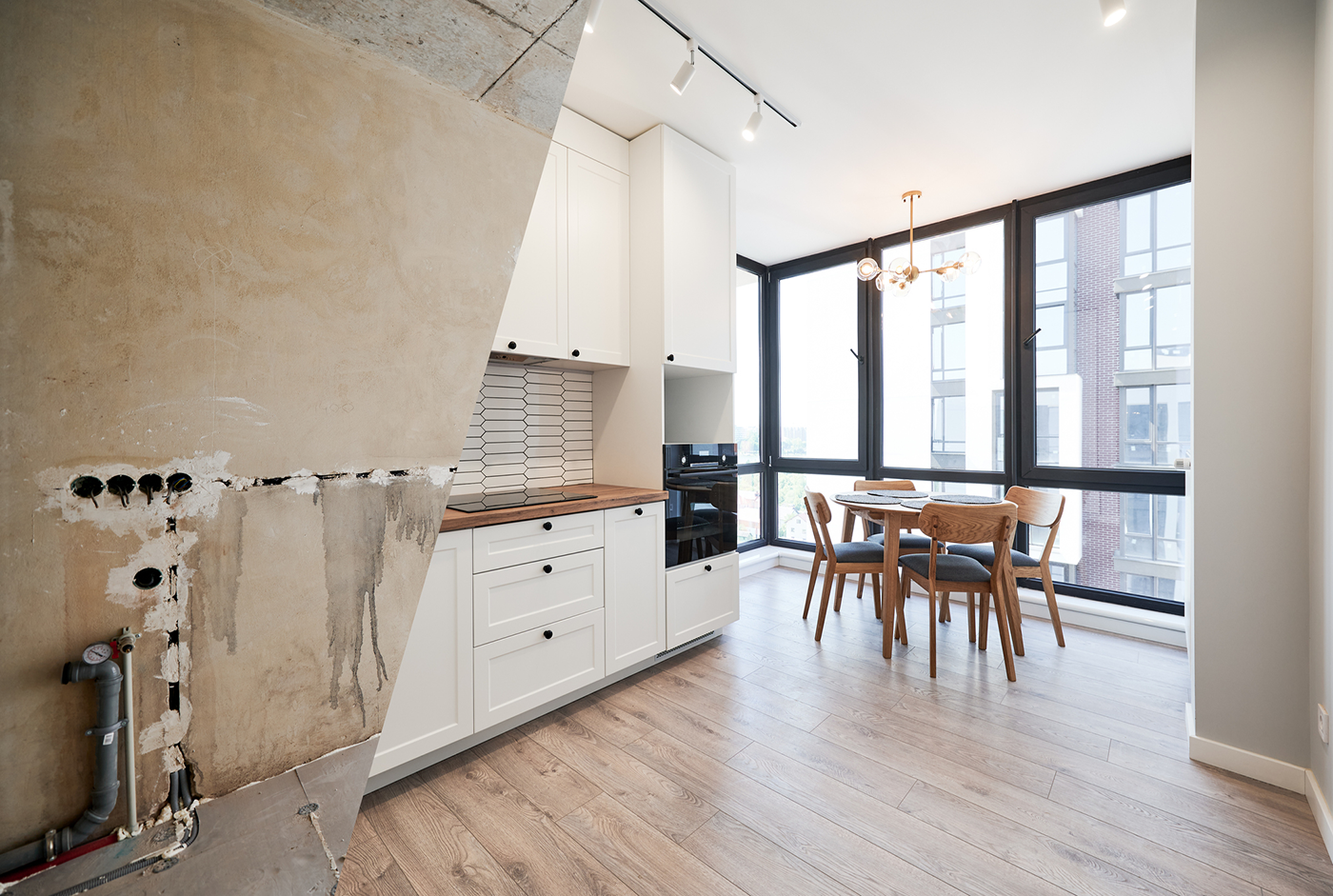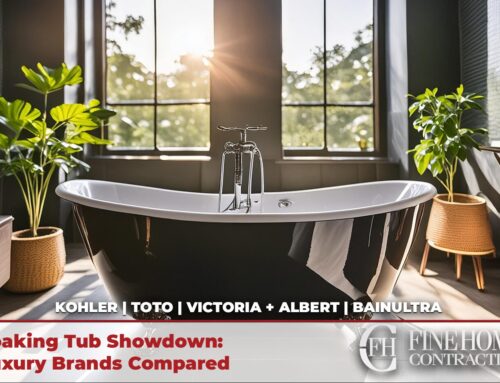Getting your foot on the property ladder can be difficult, especially with the current real estate climate in Connecticut and across the northeast. Prospective homeowners are increasingly looking at renovating starter homes and restoring older properties as options to avoid the costly process of building anew, or settling for a house on the market above a pricepoint they feel comfortable with. For those homeowners looking to craft their starter home from one of the many properties in Connecticut that need a bit of extra care, FHA203k renovation loans are a great option.
Embarking on the journey of restoring your first home should be both exciting and overwhelming, and by taking advantage of all of the financing options available from HUD/FHA, homeowners can find themselves in a freshly remodeled, bespoke home, all without the same costs and headaches of a new build or complete remodel.
Choosing the Right Option for Your Renovation:
When deciding between Full and Limited FHA203k renovations, it’s essential to carefully evaluate the scope of your project. If you’re planning extensive changes that go beyond cosmetic improvements, the Full 203k may be the right fit. For smaller projects focused on aesthetic enhancements, the Limited 203k provides a streamlined financing solution. Working closely with lenders, consultants, and contractors will help you determine the most suitable FHA203k option based on your renovation goals and budget.
Why Use Renovation Loans
Renovation loans, especially the 203k, offer several advantages to homeowners. One of the primary benefits is the ability to finance home improvements with a lower down payment compared to traditional mortgages. This can be a game-changer for first-time homebuyers who might have limited funds for a substantial upfront payment.
Additionally, renovation loans provide the flexibility to customize your home to meet your preferences. You have the freedom to choose design elements, materials, and contractors that align with your vision. This level of personalization sets renovation loans apart, making them a popular choice for those seeking to create a home that truly reflects their style.
Explaining Lenders, HUD Inspectors, and Contractors
Navigating the 203k process involves working with various professionals, including lenders, HUD inspectors, and contractors.
- Lenders play a crucial role in approving and disbursing funds, ensuring the financial aspects of your renovation go smoothly.
- HUD inspectors, appointed by the Department of Housing and Urban Development, oversee the construction progress to ensure it meets safety and quality standards.
- FHA203k Contractors are general contractors well versed in the particular requirements of 203k properties. Opt for experienced professionals with a proven track record in 203k renovations. Collaborating with a qualified team ensures that your project stays on track and within budget, minimizing potential delays and costly mistakes.
203k Limitations
While the 203k loan offers immense benefits, it’s essential to be aware of its limitations. There are specific restrictions on the types of renovations that can be funded through this loan, such as luxury upgrades. Understanding these limitations from the outset helps manage expectations and prevents potential frustrations during the renovation process.
For instance, a 203k loan may not cover the installation of a swimming pool or extravagant landscaping. Knowing these limitations allows you to plan your renovation realistically and make informed decisions about which upgrades to prioritize.
Finding a 203k Property
Identifying a suitable property for a 203k renovation requires a keen eye and strategic thinking. Look for homes in up-and-coming neighborhoods with potential for appreciation. Consider properties that might be overlooked by other buyers due to their current condition but have the bones for a transformative renovation.
Engage with local real estate agents who are familiar with the 203k process. They can help you identify properties that meet the loan requirements and guide you through the intricacies of purchasing a fixer-upper.
Tips for Specific Markets
What to Expect During Renovation
Once you’ve secured your 203k loan and purchased the property, the renovation phase begins. Set realistic expectations for the duration of the project, and establish open lines of communication with your contractors. Regular check-ins and progress reports help you stay informed about the status of the renovation and address any issues promptly.
Consider creating a detailed renovation plan that outlines the scope of work, budget, and timeline. This plan serves as a roadmap for both you and the contractors, ensuring everyone is on the same page throughout the renovation journey.
After Renovation
Completing the renovation is a moment of triumph, but it’s not the end of the road. Take the time to inspect the finished work thoroughly. Ensure that everything meets your expectations and that any agreed-upon changes are implemented to your satisfaction.
Post-renovation, prioritize regular maintenance to preserve the value of your investment. Stay vigilant for any signs of wear and tear, addressing issues promptly to avoid more extensive and costly repairs down the line.
Further Reading
For those eager to delve deeper into the world of 203k renovations, there are valuable resources available. Explore HUD’s official guidelines on 203k loans, read success stories from homeowners who have undertaken similar projects, and seek advice from industry experts. Continuous learning ensures you stay well-informed and equipped to navigate any challenges that may arise.
Restoring your first home with a 203k loan is a rewarding journey that opens the door to homeownership and personalized renovation. By understanding the intricacies of the 203k process, from loan types to working with professionals and managing limitations, you set the stage for a successful renovation. With careful planning, realistic expectations, and a commitment to ongoing maintenance, you can transform a fixer-upper into the home of your dreams.









